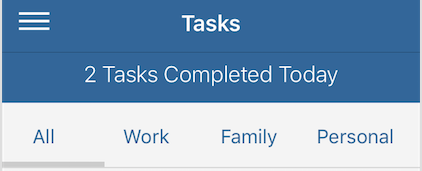So, we survived Thanksgiving and now the rest of the holiday season looms before us. While this is a time for joy, togetherness and happiness, it’s also a source of immense stress. The expectations of the holiday season have become so overwhelming and there’s a limited amount of time to get it all done. No wonder it seems to start earlier each year. So, how do you survive the season?
Not surprisingly, I try to keep up with it all with a whole bunch of lists that I keep year after year to help me stay on top of it all. Santa makes his list and checks it twice so why not give it a try? Here’s the list of lists that I use to get through the season.
Holiday Card List
For years, I have maintained a holiday card list of all friends and family members I want to keep in touch with. It includes their mailing addresses for easy reference along with a record of cards that we have sent or received. As cards come in, I update names of new family members or new addresses for those who have moved. Throughout the year, I reference this list whenever I need a mailing address.
Christmas Gift List
I create a gift list organized by person listing the gifts I would like to buy for them. I try to note where I can purchase them and any other details such as size or color. It’s been nice to go back and see what gifts I have gotten for them in years past so I don’t keep buying the same types of things. It also helps me make sure I haven’t missed anyone.
Christmas Wish List
I have been told repeatedly that I’m hard to shop for. For the most part, I have more than I need and don’t really have a long list of wants. Recently I realized that by creating my wish list I could make it easier for my family members and reduce the number of returns to deal with after the fact.
Holiday Open House Invite List
The holidays are a great time to get everyone together and I am a big fan of the holiday open house. I start from last year’s invite list and then over a week or so, add names as I think of people or run into them. This process helps me make sure I don’t overlook anyone and invite other new friends as well.
Holiday Menu Shopping List
Two weeks out, I plan the full menu for all the holiday meals. I list all the meals, number of guests and which dishes I plan to make. Then, I use this list for creating the grocery list and the meal prep timeline. Doing this ahead of time allows me to determine which items can be bought from Costco or the farmer’s market versus just the grocery store. Also, I can figure out which items can be prepared ahead of time versus just in time.
Finally, if you are travelling over the holidays, use this handy packing checklist to help you pack productively.
TRY THIS OUT: What stresses you out most about the holidays? Take time to create a list to help you plan and get organized. How do you feel? Does it help relieve some of the stress? You may even consider starting with a list of lists that might be helpful!













